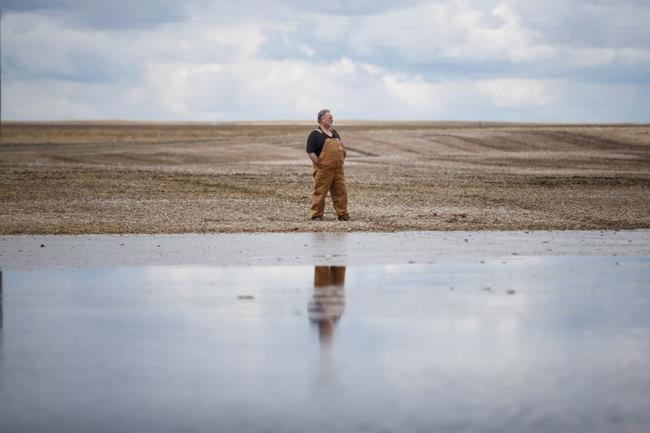When Humphrey Banack looks out the window on his farm, he can't see some of the fields he depends on to put food on the table and pay his bills.
Water from rain and melting snow is soaking grain and oilseed crops that the farmer near Round Hill, Alta., couldn't harvest last fall due to bad weather.
And fields he did manage to harvest are too sodden to walk on, let alone seed, due to a cold and wet spring.
"I haven't seen this much water lying around in all of the years I have farmed," Banack said. "We are looking at another two to three weeks before we can plant any crops or deal with the old crops."
Removing and disposing of last year's unharvested grains will be a challenge across much of the Prairies for many farmers who are eager to start spring seeding.
Alberta's Agriculture Financial Services Corp. says there are about 400,000 hectares of insured unharvested crops left over from last fall. A similar amount of uninsured crops remain in fields.
Farmers want officials to move quickly to assess and process crop insurance claims.
Any delay in seeding will push the growing season back, which could put new crops in jeopardy of frost damage this fall.
Some of the old crop may be salvageable. But for the portion that has to be written off, farmers hope governments will be flexible on how it can be disposed of.
Banack said some can be chopped up with harvesters, but burning it makes the most sense. Fields are too muddy to plow the material back into the ground.
"I know we don't need a big prairie fire running from Edmonton to Regina, but we are going to have to burn some of this crop. It has no value and it is going to be the best way to manage it."
Todd Lewis, president of the Agricultural Producers Association of Saskatchewan, said some farmers in his province face the same challenge.
Lewis said conditions are expected to push seeding back weeks in many areas.
"Over a million acres didn't get combined last fall in the province of Saskatchewan," Lewis said from his farm near Gray.
"As a rule of thumb, May 1 is a good barometer for some seeding being done generally across the province. We are not going to see that this year."
Manitoba estimates about 40,000 hectares were not harvested last fall, mainly in the southwest. Parts of the province will be able to begin seeding soon, but some farmers are reporting the wettest spring they have seen.
Bill Campbell, who owns a mixed farm near Minto, said it could be a month before he can sow his fields.
Campbell figures he will need a few weeks just to clear off his unharvested crop and prepare his land.
In the meantime, he is hoping for warm, dry conditions.
"If we had three weeks of 20-degree weather that would be my wish," he laughed.
"It has just been a rough fall and a rough winter. Pray to God that 2017 is better than 2016."
John Cotter, The Canadian Press
